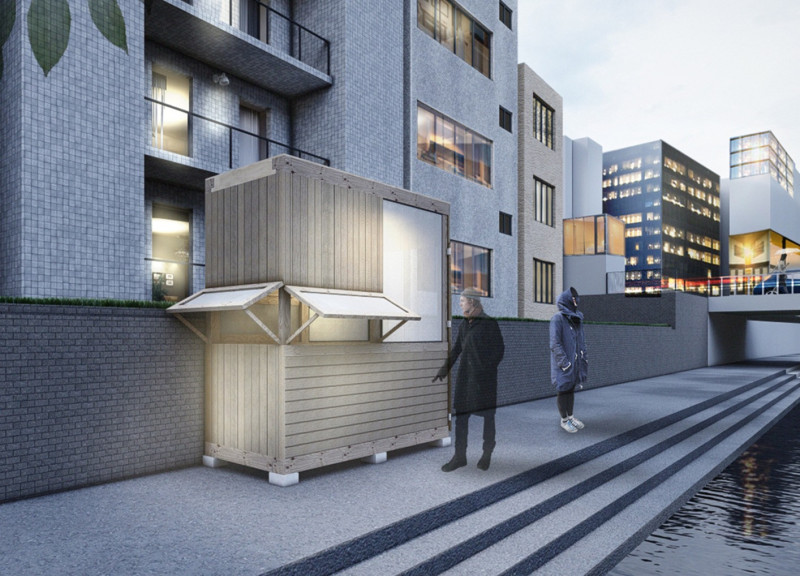5 key facts about this project
The architecture of the meditation cabin is marked by its simplicity and material honesty. Utilizing a combination of wood, glass, and concrete, the design reflects both a contemporary style and a respect for nature. The wooden elements evoke warmth, while the glass is employed strategically to create transparency, letting in natural light and allowing occupants to feel connected to their surroundings. Concrete provides structural integrity, grounding the cabin within Tokyo’s urban context.
Unique Design Principles
The design incorporates significant cultural motifs, including the concept of the Torii gate, which symbolizes the transition from the mundane to the sacred. This metaphor is central to the architectural experience, encouraging users to enter the cabin and engage in moments of meditation and self-exploration. Additionally, the project features carefully designed pathways leading to the cabin, promoting accessibility while simultaneously offering privacy.
Sound-masking technology and adjustable lighting enhance the meditation experience, allowing users to tailor the environment to their personal preferences. These features demonstrate a commitment to functionality, ensuring that the space can accommodate various types of mindfulness practices. The cabin's orientation and layout are designed to maximize views of the surrounding landscape, contributing to a sense of serenity.
Design Engagement and Interaction
The meditation cabin is not just a building but a carefully curated environment that fosters interaction between its users and the urban landscape of Tokyo. The design encourages spontaneous engagement with nature, allowing occupants to immerse themselves in a peaceful atmosphere effectively. The integration of natural materials aligns with the principles of Wabi-Sabi, celebrating the beauty of imperfection and the inherent qualities of the materials used.
This project exemplifies innovative architectural ideas that address the challenges faced by urban residents today. By offering a dedicated space for meditation, the cabin promotes mental health and wellness within the city. It stands as an illustrative example of how architecture can play a pivotal role in enhancing quality of life in densely populated areas.
For those interested in further exploring the architectural plans, sections, and detailed designs of the meditation cabin, it is encouraged to review the project presentation for additional insights into its innovative approaches and design philosophy.























